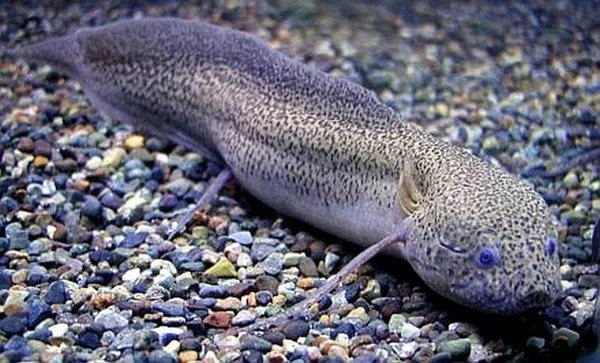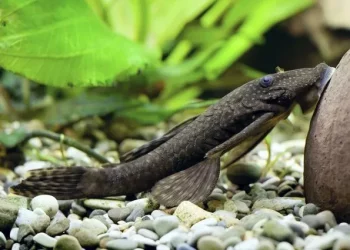The Australian lungfish, Neoceratodus forsteri, is a freshwater fish native to eastern Australia. It is a prehistoric creature and one of the oldest living species on earth. The species is one of the only six extant species of lungfishes, which are considered to be the closest living relatives to the tetrapods (four-legged animals). The Australian lungfish has a unique and fascinating evolutionary history, and its origin can be traced back to the Triassic period, about 380 million years ago.
The Australian lungfish belongs to a family of fishes known as the Dipnoi, which includes three other genera of lungfishes found in Africa and South America. The Dipnoi are unique among fishes in that they have both gills and lungs. This allows them to breathe air when oxygen levels in the water are low, making them adaptable to living in stagnant water bodies. The Australian lungfish has a flattened, elongated body that can grow up to 1.5 meters in length. It has a dorsal fin that runs along the length of its body and a tail fin that is deeply forked.
The Australian lungfish is found in the Burnett, Mary, and Brisbane river systems in eastern Australia. These waterways are connected to the Great Barrier Reef, and the lungfish was once thought to have a wider distribution throughout the region. However, habitat loss and degradation have led to the species becoming threatened, and its range has become restricted to a few river systems.
The evolutionary history of the Australian lungfish is fascinating. Fossil records suggest that the ancestors of the Australian lungfish were once found in freshwater environments around the world, including Europe, North America, and Antarctica. However, over time, the species became restricted to the southern hemisphere. Fossil evidence also suggests that the Australian lungfish has remained relatively unchanged over the past 100 million years, making it a living fossil.
The Australian lungfish has a unique reproductive cycle. Unlike most fish species, it does not lay eggs. Instead, the female lungfish lays a small number of large, yolky eggs in a nest that she constructs in the riverbed. The male then fertilizes the eggs, and the female guards the nest until the eggs hatch. The larvae have external gills that allow them to breathe underwater. They also have a long dorsal fin that runs the length of their body, which they use to move through the water. As they grow, they develop lungs and lose their external gills.
The Australian lungfish is an important cultural and ecological species. It has been of significance to Indigenous Australians for thousands of years, and it plays a critical role in the ecology of the rivers it inhabits. As a top predator, it helps to maintain the balance of the ecosystem by controlling the populations of other species. However, the species faces a range of threats, including habitat loss and degradation, river regulation, and pollution. Efforts are underway to protect and conserve the species, including habitat restoration, captive breeding programs, and public education campaigns.
In conclusion, the Australian lungfish is a unique and fascinating species that has captured the imagination of scientists and the public alike. Its evolutionary history, reproductive cycle, and ecological significance make it an important species for conservation efforts. While the species faces a range of threats, there is hope that with continued conservation efforts, it will continue to thrive in its natural habitat for generations to come.


























